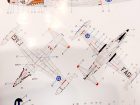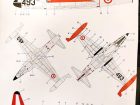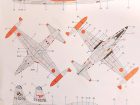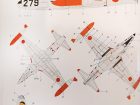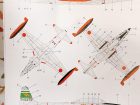
Short feature build by Rob Ruscoe
‘Japanese and South American T-Birds’
The Lockheed T-33 really needs little introduction. Developed from the single seat P-80, the first jet fighter to enter operational service with the USAAF, the aircraft first flew in March 1948 and became the most widely used jet trainer ever built, serving with over thirty nations including Bolivia which only retired the type in 2017.
Guatemala operated a total of eight T33s as anti-insurgency aircraft- that is, when they could be made serviceable by the cash strapped air force.
Over 6500 T33s were built between 1948 and 1959. Powered by an Allison J33 centrifugal flow turbojet of 4,600lb static thrust (5,400lb with water injection for take-off), the aircraft had a maximum speed of 600 mph (970kph) at sea level.
The Kit
Although the Shooting Star is one of the most significant jet aircraft ever built, this is the first time, to my knowledge, that it has been kitted in 1:32nd scale. First produced by Czech Models in 2009 as a P80C, the T33 version appeared the following year. Both models were then re-boxed under the Special Hobby banner in 2014 with new decals and PE for various operators. This particular boxing of ‘Japanese and South American T-Birds’, contains a total of five different markings.
- AT33 No.721, Guatemalan Air Force, 1970.
- T-33A, No 493, Peruvian Air Force, 1970
- T-33A, No 279 303rd Sqn, JASDF, Aug 1981
- The same aircraft, 306th Sqn, JASDF, Autumn 1981
- The same aircraft, Western ADF, HQ and Support Sqn, JASDF, 1976.

Most of this is used to detail the cockpits. The large canopy was crystal clear.
The instructions are reasonably clear over the thirty one stages of construction but, the only colour call-outs are for the Gunze Sanyo range of paints.
Having just built HKs Havoc and Trumpeters TBD Devastator, I could see straight away that I would need to bring a few more modelling skills to the table with this model. Typically for a limited run kit, there are no locating pins anywhere. In addition, a trial fit of the fuselage halves revealed the port half to be slightly longer than the right. Flash was also present on most major components and would require careful cleaning up. On the plus side, the sprue gates were generally nice and small.
